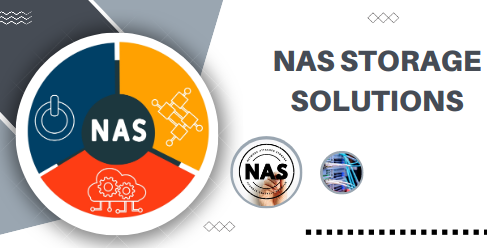-ugtnd.png)
In this blog post, we will be discussing the key differences of network attached storage(NAS) and storage area network (SAN).We will also be giving our verdict on which system reigns supreme.
SAN, or storage area network, is a centralized storage system that is typically used by enterprise-level businesses. SAN systems offer high performance and are highly scalable. However, they can be expensive to implement and require a certain level of technical expertise to maintain.
NAS, on the other hand, is a distributed storage system that can be used by businesses of all sizes. Network Attached storage systems are easy to set up and use and are typically more affordable than SAN systems. However, they don't offer the same level of performance as SAN systems.
So, which one is the best? The answer depends on your specific needs and budget. If you need a high-performance storage system that can be easily scaled, then a SAN system is the way to go. However, if you're looking for an affordable storage system that is easy to set up and use, then a NAS system is the better option.
What is NAS?
NAS is a file level computer data storage server connected to a computer network providing data access to a heterogeneous group of clients. NAS systems are manufactured as appliances, built from scratch using standard components, or integrated into existing network infrastructures. A Network Attached storage unit is a single implementation of such a system. It typically consists of one or more hard disks, often arranged into logical, redundant storage containers or RAIDs.
In layman’s terms, it is a device that contains one or more hard drives that are connected to your home or business network. This gives all the computers in your network the ability to access the data stored on the Network Attached storage device. The reason why people use NAS devices is that they provide an easy way to share data between multiple computers without having to physically connect each computer to an external hard drive.
What is SAN?
A storage area network (SAN) is a dedicated high-speed network that provides access to consolidated, block level data storage. SANs are primarily used in enterprise storage environments where requirements include very high performance and reliability . A SAN typically has its own fiber channel fabric infrastructure separate from the local area network (LAN). A SAN may use existing Ethernet infrastructure but performance and security suffer as a result because Ethernet was not designed for such heavy usage.
In simple terms, it is a high speed fiber optic cable that connects multiple storage devices to one another and to the servers in an enterprise environment. The main benefit of using SAN is that it allows for much faster data transfer speeds than traditional networking methods such as Ethernet or Wi-Fi.
Comparison:
A key difference between NAS and SAN is that NAS is designed for easy file sharing, while SAN is designed for fast data transfer. Another difference is that NAS devices usually have their own dedicated operating system while SAN devices typically do not have an operating system installed on them. Finally, NAS Storage Solutions devices are usually cheaper than SAN devices since they are less complex .
So which one should you use? It depends on your needs. If you need fast data transfer speeds and don’t mind spending a little extra money, then you should use SAN. If you just need an easy way to share files between multiple computers, then you can save some money by using Network Attached storage instead.
When it comes to choosing between NAS and SAN systems, there is no clear-cut answer. It ultimately depends on your specific needs and budget. If you need a high-performance NAS storage solutions system that can be easily scaled, then a SAN system is the way to go. However, if you're looking for an affordable storage system that is easy to set up and use, then a NAS system might be the better option for you.
Conclusion
In conclusion, the choice between NAS (Network Attached Storage) and SAN (Storage Area Network) depends on specific requirements and considerations. NAS offers ease of use and simplicity, making it suitable for small to medium-sized environments. It provides file-level access and is ideal for tasks such as file sharing and data backup. On the other hand, SAN offers high performance, scalability, and advanced features. It excels in large-scale enterprise environments, providing block-level access and enabling efficient data storage and retrieval for mission-critical applications.
